Part 2: South Dakota in detail
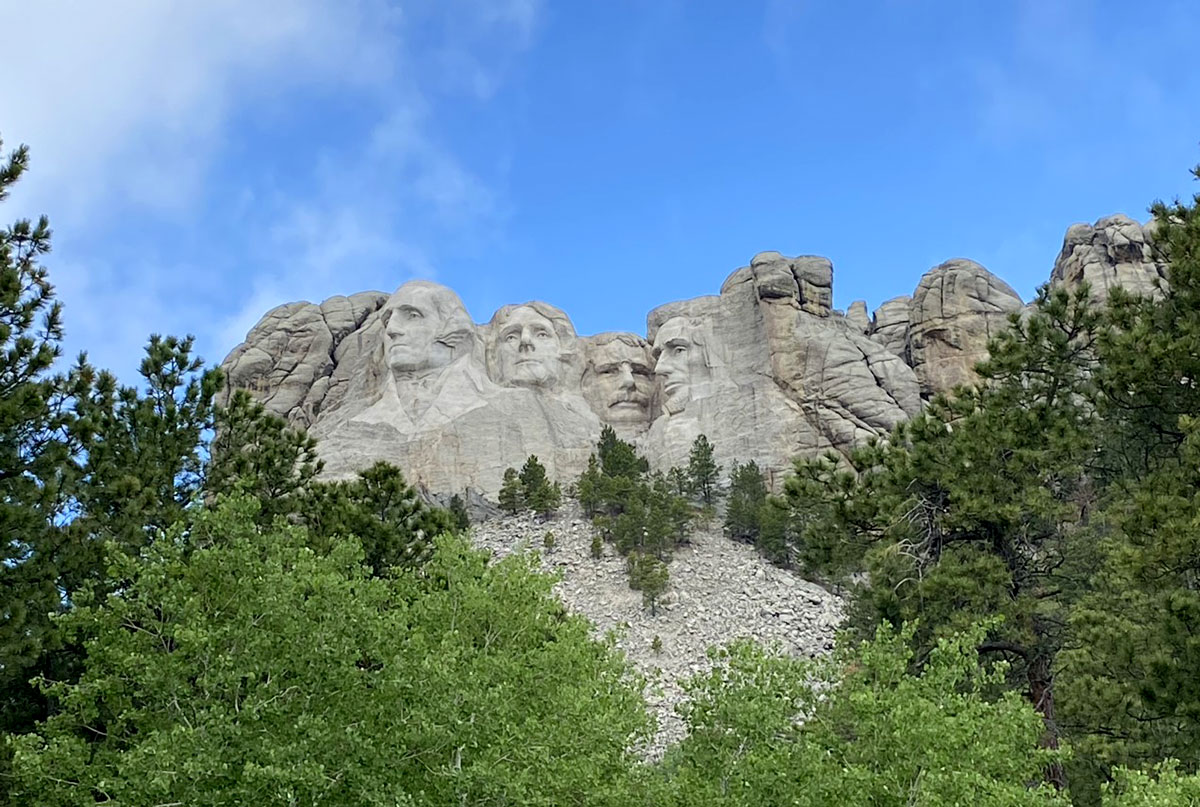
Seeing Mount Rushmore in real life for the first time is jarring. To see the giant heads of George Washington, Thomas Jefferson, Abraham Lincoln and Theodore Roosevelt dominate the landscape is amazing. And to think it was done without any of today’s technology.
More than 5,000-feet tall, the project was started in 1927 and had 400 people working on it until its completion on October 31, 1941. The project’s origins began with artist Gutzom Borglum. In 1923, he was given a letter from Doane Robinson, State Historian of South Dakota, asking him to investigate the mountain range in the Black Hills of South Dakota to see if a carving in the nearby mountains was possible in order to increase tourism. After Borglum’s visit in 1924, he worked on developing the machinery needed. After Borglum’s death in March of 1941, his son Lincoln took over for the rest of the project.
The workers used dynamite to blow off pieces from the mountain and would drill holes close together to remove pieces of rock by hand. They wore harnesses as they hung from the mountain, working on each of the faces under the guidance of a “pointer,” a man whose job was to literally point to where the next spot needed to be carved.
Built by Borglum in 1939, The Statue Studio, located below the viewing balcony, is a log cabin with a model of the original design for the mountain. It shows the presidents carved from the waist up, but this idea was shelved due to insufficient funds.
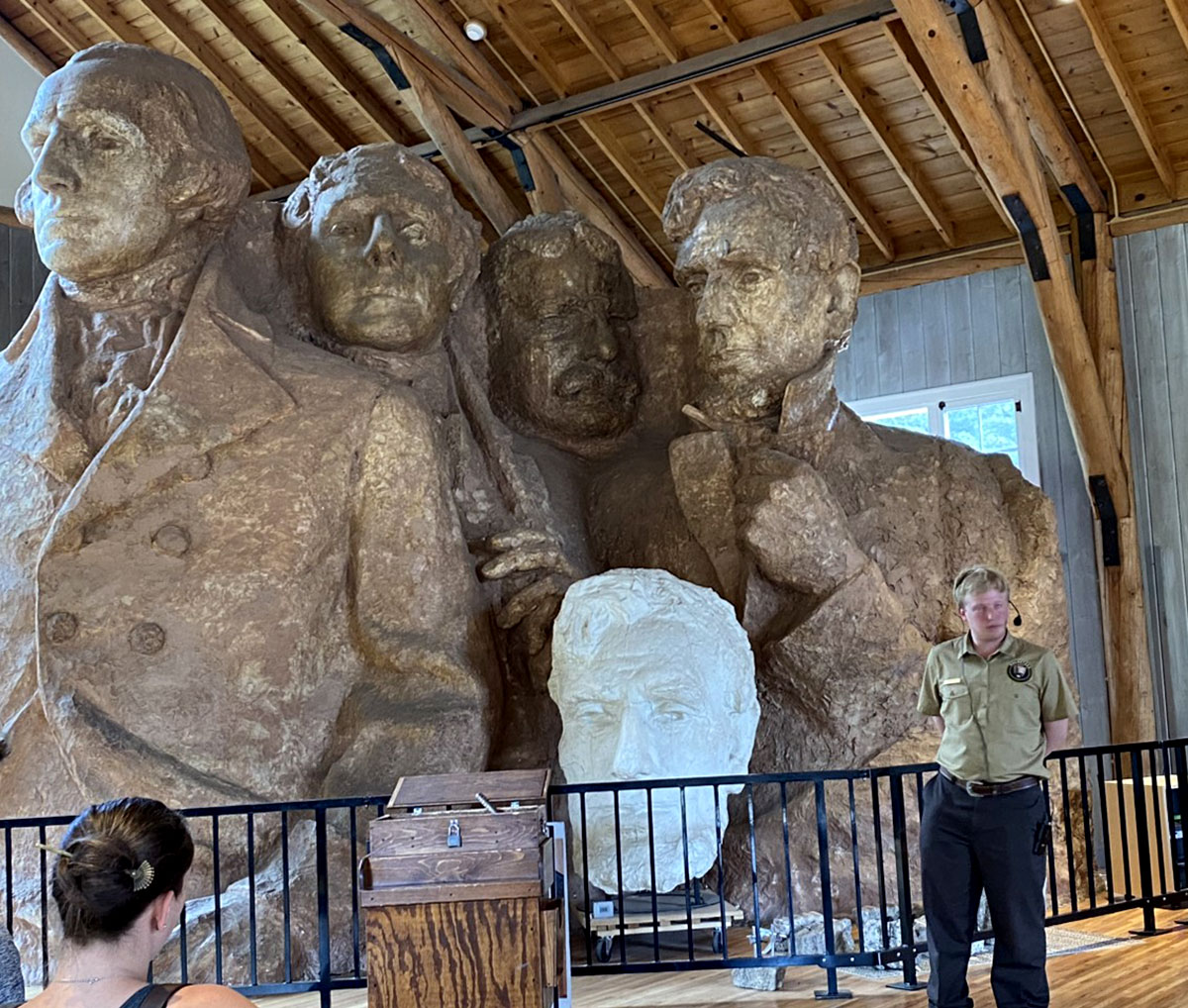
The view on top of the summit is even better than one expects. The best viewing spot is the center of the railing, but no matter where one walks, it’s impossible not to get a good photo.
The museum contains many interesting facts about the monument. For instance, Jefferson was actually supposed to be on the left instead of Washington, however, they realized there wouldn’t be enough room and blasted it all away and started over. There is a secret room behind Lincoln’s head containing copies of the Constitution, the Declaration of Independence and the Emancipation Proclamation. They stand as a reminder of the presidents’ accomplishments, but the room is not accessible to the public.
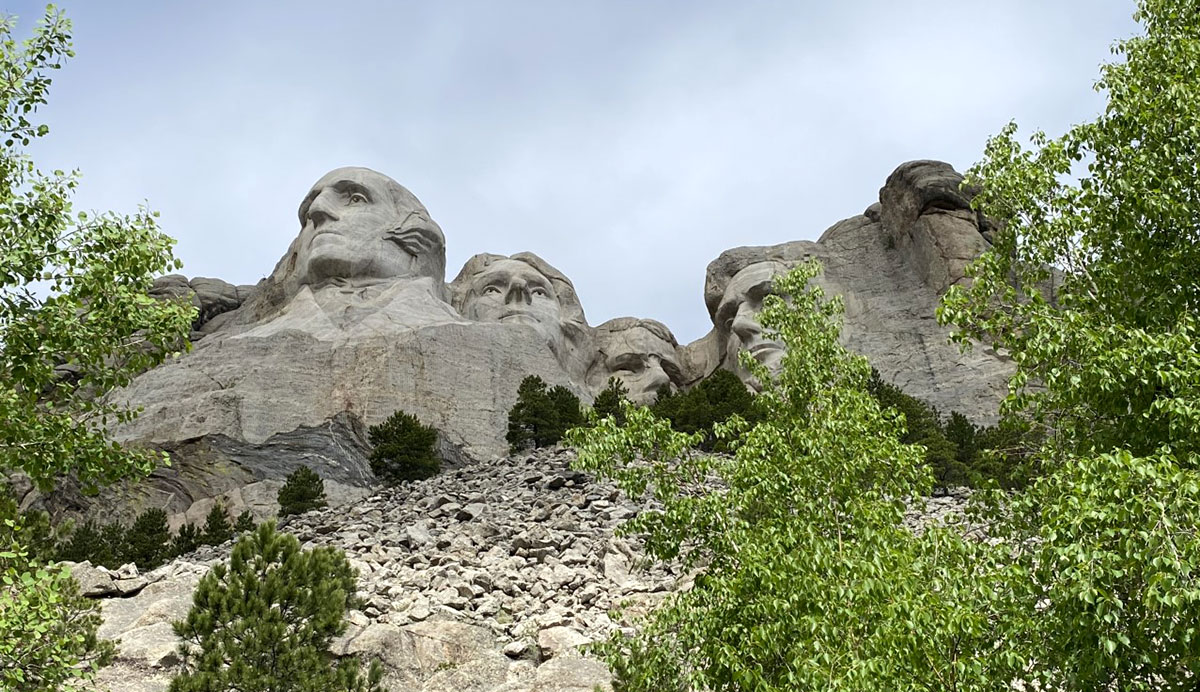
In the evening, it’s worth visiting Mount Rushmore’s amphitheater to watch the lighting ceremony — although make sure to wear layered clothing to combat the chill in the air. A park ranger spoke about how Franklin Roosevelt helped preserve National Parks, with more than 640 million acres of land protected in the U.S. as a result of his actions. After a short film about the monument’s history, the statues glowed as the national anthem played.
Admission for the park is free, with a parking fee of $10. It is open weekly from 5 a.m. to 11 p.m. For more information,visit nps.gov/moru.
The earby Rushmore Tramway Adventures theme park features ziplines, a ropes course, a tube slide and an alpine slide. It is a fun excursion for kids and adventurous adults alike.
Tickets vary depending on rides and packages. Hours vary from 9:30-10:30 a.m. to 5-7 p.m. For more information, visit rushmoretramwayadventures.com.
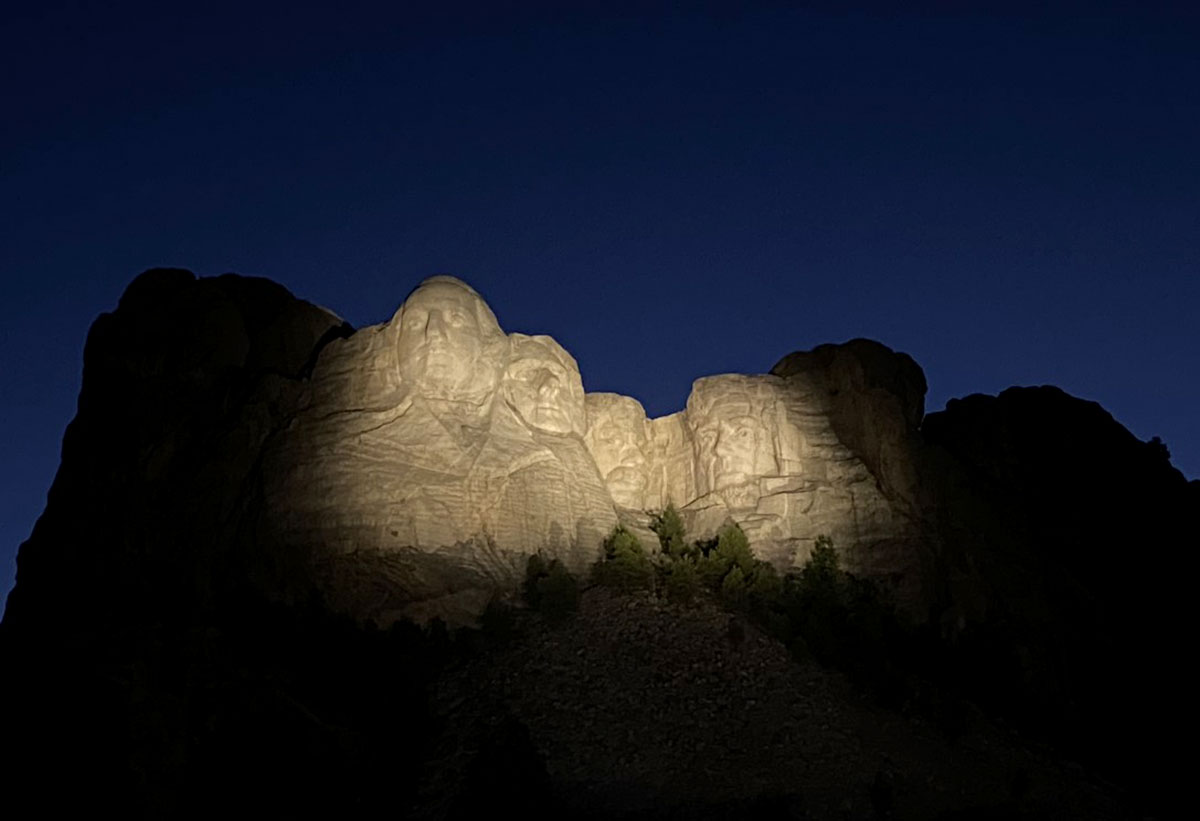
A short drive from Mount Rushmore is the Crazy Horse memorial. Crazy Horse was a Lakota war leader who led the Oglala band during the 19th century. Born around 1840-1845, he fought against the U.S. government’s infiltration on Native American territory. He participated in battles such as The Black Hills War, the Fetterman Fight and the Battle of the Little Bighorn. Crazy Horse’s last major battle against the U.S. Calvary in 1877 ended with his surrender and he returned to his village. A few months later, he was killed by a soldier at Fort Robinson, Nebraska. All through his life, he refused to have any portraits or photos made as he believed they would cut his life short. A wooden bust was later created of his likeliness by sculptor Korczak Ziolkowski.
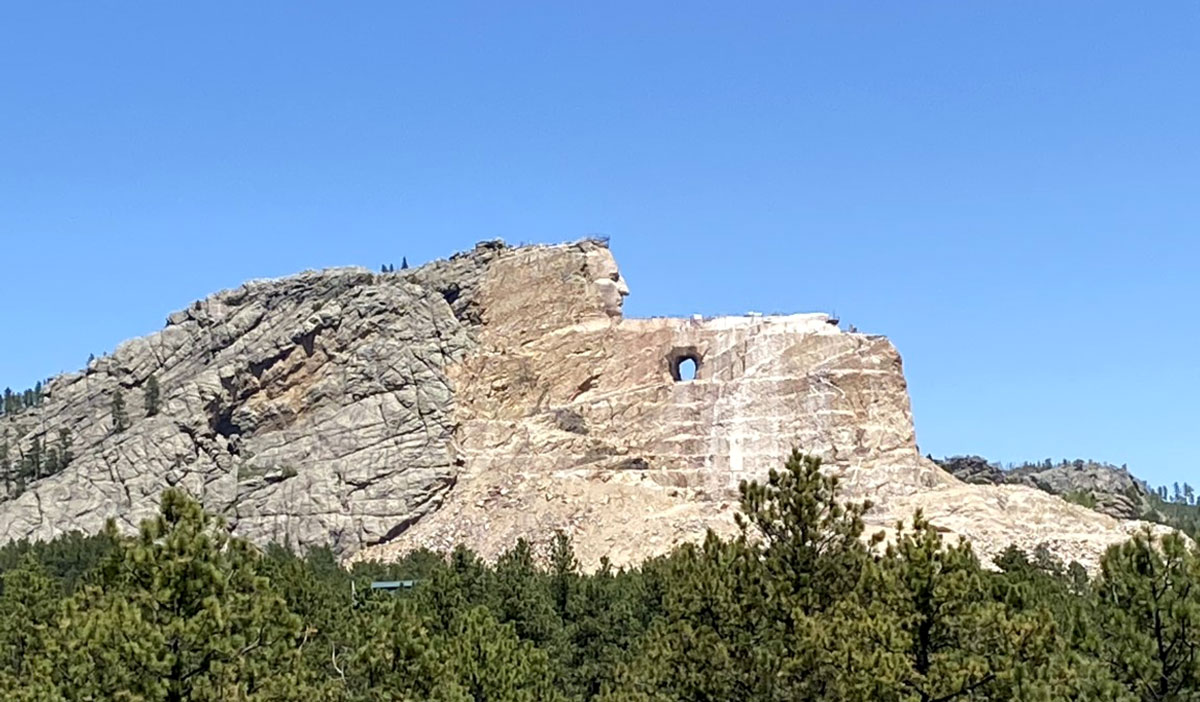
Ziolkowski would go on to establish the Crazy Horse memorial in 1948, along with the statue’s construction which is still unfinished. The final project will be 563-feet tall, rivaling the size of Mount Rushmore. Binoculars installed on a viewing site show an image of what the statue will look like once it is completed.
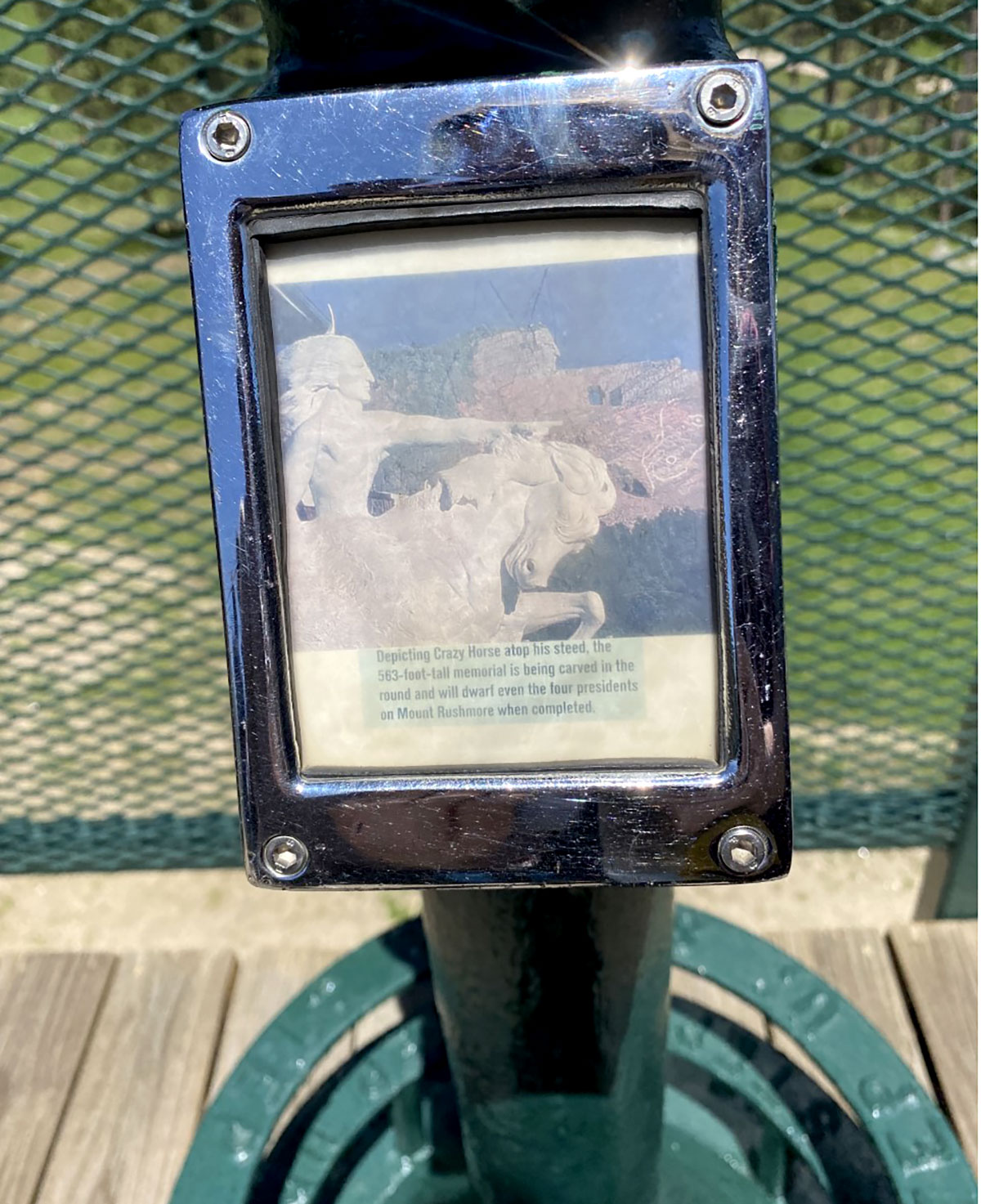
Along with the mountain, there are museums such as the Indian Museum of North America and the Native American Educational and Cultural Center. The Mountain Carving Gallery is a visual tribute to the mountain telling visitors about its origins. Ziolkowski’s home and studio contains sculptures of Crazy Horse’s history. Learning about Crazy Horse was an enlightening experience. Once the monument is complete, it promises to be just as popular to visit as Mount Rushmore.
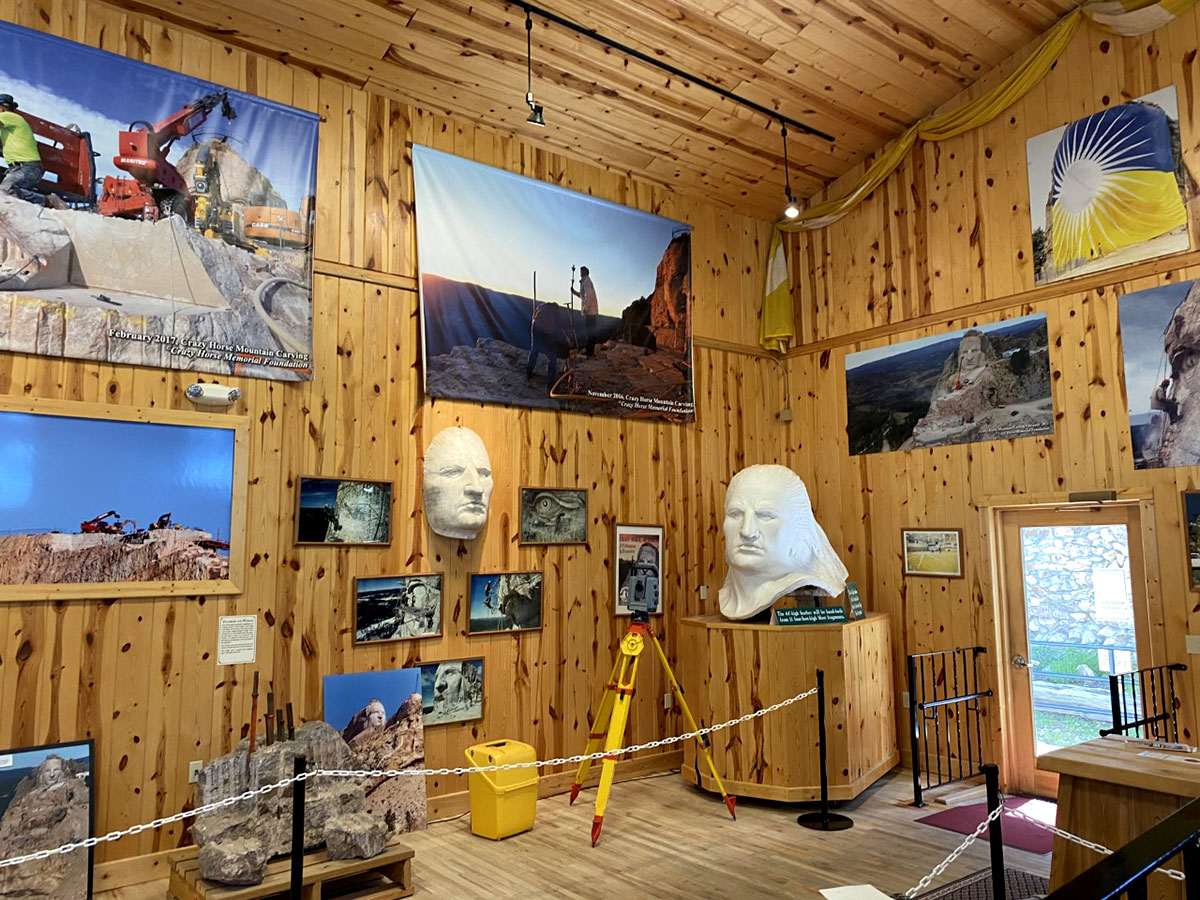
Admission for the memorial is $35 for three or more people in a vehicle, $30 for two people in a vehicle, $15 for one person in a vehicle, and $1o per person on a motorcycle, bicycle or walking with no additional parking fees. The park is open year-round. For more information, visit crazyhorsememorial.org/visit.
